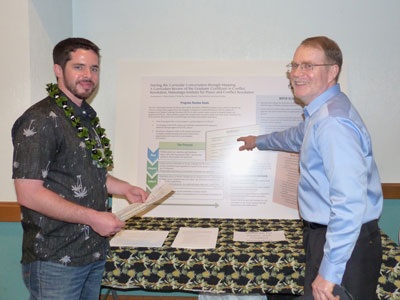
In Spring 2013, the Matsunaga Institute for Peace and Conflict Resolution
(MIPCR) began a program review process by completing a curriculum map of the
Graduate Certificate in Conflict Resolution (GCCR). The 15-credit interdisciplinary
certificate is designed to address a set of program-level student learning outcomes (SLO). A curriculum assessment would determine if the GCCR’s Peace and Conflict Education (PACE) courses, as well as GCCR-approved courses from other programs, aligned with these outcomes. It would also reveal whether students had adequate opportunities to achieve the outcomes. This initiative would open dialogue among faculty, administrators, and students to discuss student success and program improvement.
Instructors of PACE and GCCR-approved courses received a survey listing each
program-level SLO and were asked to indicate the degree to which their course addressed each outcome. Responses to the surveys were recorded in a curriculum map and presented to a volunteer review committee for interpretation and discussion. This
committee made recommendations for the program, including clarifying program goals
and positioning to guide program-level SLOs, and further clarifying SLOs to ensure
collective understanding by faculty members. Committee members also noted that there
are limited opportunities for students to focus on professional ethics. It was further
recommended that faculty and staff ownership of the review process be fostered through transparency and collaboration. Challenges of meeting SLOs through interdisciplinary programming were also revealed. The MIPCR Curriculum Committee discussed the results and recommendations and concluded that a more complete curriculum map and continued discussion was needed before making any curricular decisions. By Allison Bustria, Craig Mitchell, and Anne Smoke
Recommended Citation:
Bustria, A., Mitchell, C., and Smoke, A. (2014, April). Starting the Curricular Conversation through Mapping: A Curriculum Review of the Graduate Certificate in Conflict Resolution. Poster session presented at the Assessment for Curricular Improvement Poster Exhibit at the University of Hawai‘i at Mānoa, Honolulu, HI.
